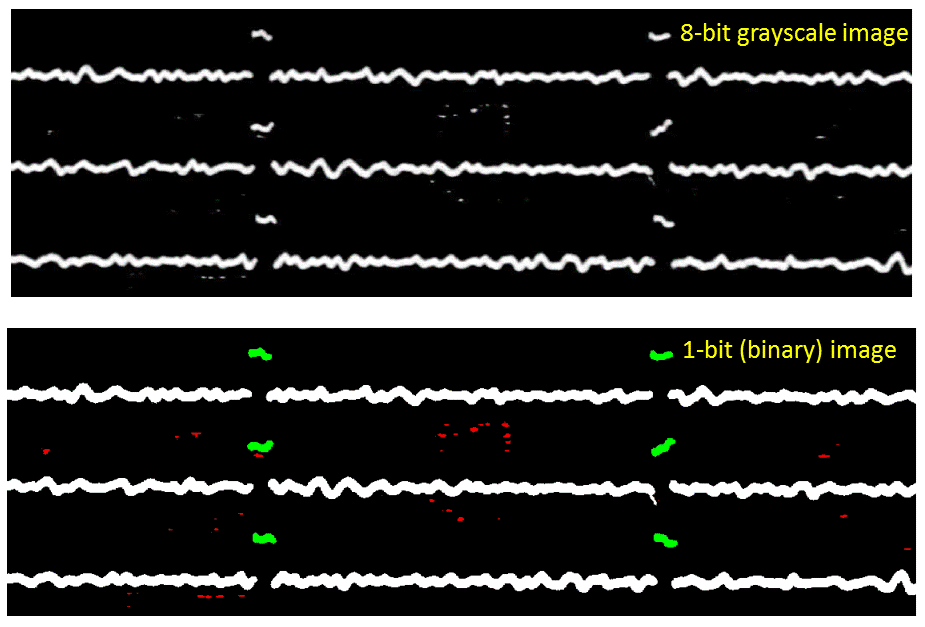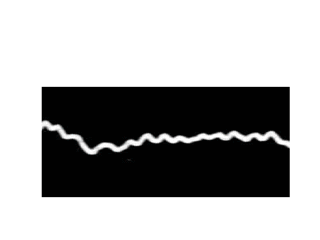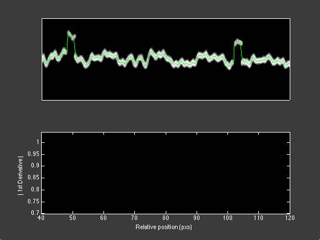|
|
DigitSeis: A Digitization Software for Analog Seismograms
Point of contact: Thomas Lee |
DigitSeis is a software written in MATLAB that converts digital, raster images of analog seismograms to readily usable, discretized time series using image processing algorithms. It runs both on Mac and Windows, and does not require MATLAB installation.
DigitSeis v1.5 Download (September 01, 2020)
The documentation for DigitSeis v1.5 includes both a QuickStart and a full manual. The QuickStart manual is a short document that outlines only the main steps necessary to digitize an analog seismogram. The full manual is extensive, and covers all features in detail. Online resources, including tutorial videos and troubleshooting, are also available below.
UPDATE (November 05, 2020): Installers and packages for v1.51 have been added to Individual Files below. DigitSeis v1.51 is identical to DigitSeis v1.5 except for the addition of a Spanish language option (Only English and Japanese were available in v1.5). If you do not need the Spanish language option and have already updated to v1.5, there is no need for v1.51.
UPDATE (April 15, 2021): v1.51 for Mac Users has been fixed to resolve a loading error arising from runtime mismatch. Note that there are known issues with trying to initialize and run DigitSeis in Mac OS Big Sur, and we are working to adress this issue.
UPDATE (October 11, 2022): The installers (for v1.51) in .app format (must untar first, i.e., tar -xvf [file]) are now provided to users to provide more flexibility in working around issues running the program on recent versions of OS X. Your mileage may vary, and please read the README, as using these installers is a bit more involved and will involve setting a necessary environmental variable on your system.
- Bundles
- Individual Files (* = recommended for recent versions of OS X)
- README for Mac Users on recent releases of OS X (text file, 52 MB)
- DigitSeis v1.51 Installer for Mac Users (app file, 52 MB)*
- DigitSeis v1.51 Installer for Mac Users without stable internet (app file, 840 MB)*
- DigitSeis v1.51 Package for Mac Users (zip file, 840 MB)
- DigitSeis v1.51 Installer for Windows Users (exe file, 53 MB)
- DigitSeis v1.51 Installer for Windows Users without stable internet (exe file, 879 MB)
- DigitSeis v1.5 Package for Mac Users (zip file, 1752 MB)
- DigitSeis v1.5 Installer for Windows Users (exe file, 54 MB)
- DigitSeis v1.5 Installer for Windows Users without stable internet (exe file, 890 MB)
- Quick Start Manual (pdf file, 5.5 MB)
- Full Manual (pdf file, 24 MB)
- Example Image (JPEG file, right-click and save link to download, 60 MB)
- ConvertSACFormat standalone for Mac Users (zip file, 699 KB) (see Troubleshooting for more information)
- ConvertSACFormat standalone for Windows Users without MATLAB runtimes (exe file 1442 KB) and with runtimes (exe file 543 MB)
- Online Resources
Citizen Science
With a vast amount of seismograms needing to be digitized and human supervision required by DigitSeis, we have begun a pilot program involving high-school students in Japan. The ultimate goal of this program is to convert it into a full citizen-science project. If you are interested in this type of activity, please contact Miaki Ishii or Thomas Lee.Description
An analog seismogram is typically subject to various distortions. For example the spiral way of recording around a rotating drum, also known as helicorder drum causes a quadratic distortion (Figure 1a). Additionally, storage conditions, scanning or photo shooting process further distort the seismogram and consequently the final raster image with (e.g., Figure 1b). Such distortions that often cannot be handled deterministically (i.e., by fitting a mathematic distortion model), may deteriorate the digitization and the timing of the traces. DigitSeis automatically identifies and corrects for various geometrical distortions of seismogram images.

Figure 1: Example of various distortions that exist in seismogram images. (a) Helicorder distortion along the traces. The solid line in the middle of the image represents the second-degree polynomial that fits the observed distortion. (b) Distortion along the time marks showing horizontal stretching or shrinkage. The two insets show zoom in around two vertical strips, and the dashed lines are identical in both windows, drawn to follow the position of the time marks in the left strip.
With human supervision, DigitSeis identifies and classifies the different features of the seismogram such as time marks, main trace and noise such as stains and handmade notes (e.g., Figure 2).

Figure 2: An example of classification of traces into three categories, main traces (white), time marks (green) and noise (red).
DigitSeis uses the classification result to digitize both the traces and the time marks, by using the intensity information (Figure 3). Although a large effort has been made to minimize the human input, DigitSeis provides interactive tools to deal with challenging situations such as trace crossings and stains in the paper.

Figure 3: Demonstration of the digitization process.
One of the advantages of DigitSeis is that it corrects time-mark offsets from the main trace to produce continuous seismograms (Figure 4). Furthermore it uses the locations of the time marks to accurately time the traces.
 |
Figure 4: This animation demonstrates the reasoning based upon DigitSeis corrects for the time marks off-set. At the top is shown the digitization result for various relative positions between the normal trace and offset. At the bottom is shown the corresponding mean amplitude of the first derivative of the digitized trace. |
DigitSeis Downloads
- DigitSeis v1.5 (September 01, 2020)
- Bundles
- Individual Files
- DigitSeis v1.5 Package for Mac Users (zip file, 1752 MB)
- DigitSeis v1.5 Installer for Windows Users (exe file, 54 MB)
- DigitSeis v1.5 Installer for Windows Users without stable internet (exe file, 890 MB)
- Quick Start Manual (pdf file, 6.3 MB)
- Full Manual (pdf file, 15 MB)
- Example Image (JPEG file, use right mouse button to download, 60 MB)
- DigitSeis v1.3 (March 29, 2018, Windows version added April 20, 2018)
- Bundles
- Complete package for Mac Users (includes Manual, DigitSeis v1.3, Example Image, 850 MB)
- Complete package for Windows Users (includes Manual, DigitSeis v1.3, Example Image, 100 MB)
Please note that this version has not been tested extensively, and there may be issues with saving the analysis. If you are using this version, please save frequently to files with different names.
- Individual Files
- Manual (pdf file, 30 MB, updated April 20, 2018)
- DigitSeis v1.3 Package for Mac Users (zip file, 800 MB)
- DigitSeis v1.3 Package for Windows Users (zip file, 10 MB)
Please note that this version has not been tested extensively, and there may be issues with saving the analysis. If you are using this version, please save frequently to files with different names. - Example Image (JPEG file, use right mouse button to download, 60 MB)
- Bundles
- DigitSeis v1.1 (June 01, 2017)
- Download DigitSeis v0.53 with its user manual (zip file, ~3 MB)
Reference
If you use DigitSeis v1.3 and above, please refer to the following publication.- Ishii, M., & Ishii, H., 2022.
DigitSeis: software to extract time series from analogue seismograms.
Progress in Earth and Planetary Science 9(1), 1-16.
For versions earlier than v1.3, please use the following publication.
- Bogiatzis, P, & Ishii, M., 2016.
DigitSeis: A new digitization software for analog seismograms.
Seismological Research Letters 87(3), 726-736.
Acknowledgment
This project was partially supported by the U.S. Geological Survey Earthquake Hazard Program G14AP00016, G16AP00021, G17AP00007, and G18AP00018 as well as by the Miller Institute for Basic Research in Science at University of California, Berkeley.